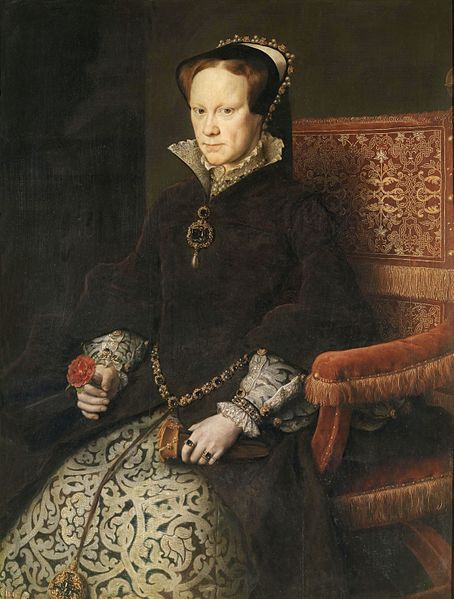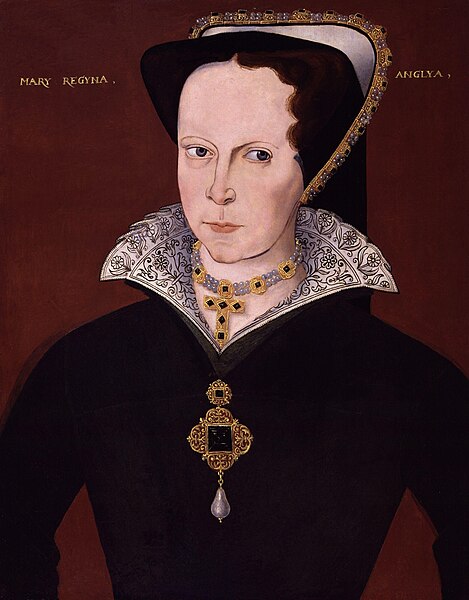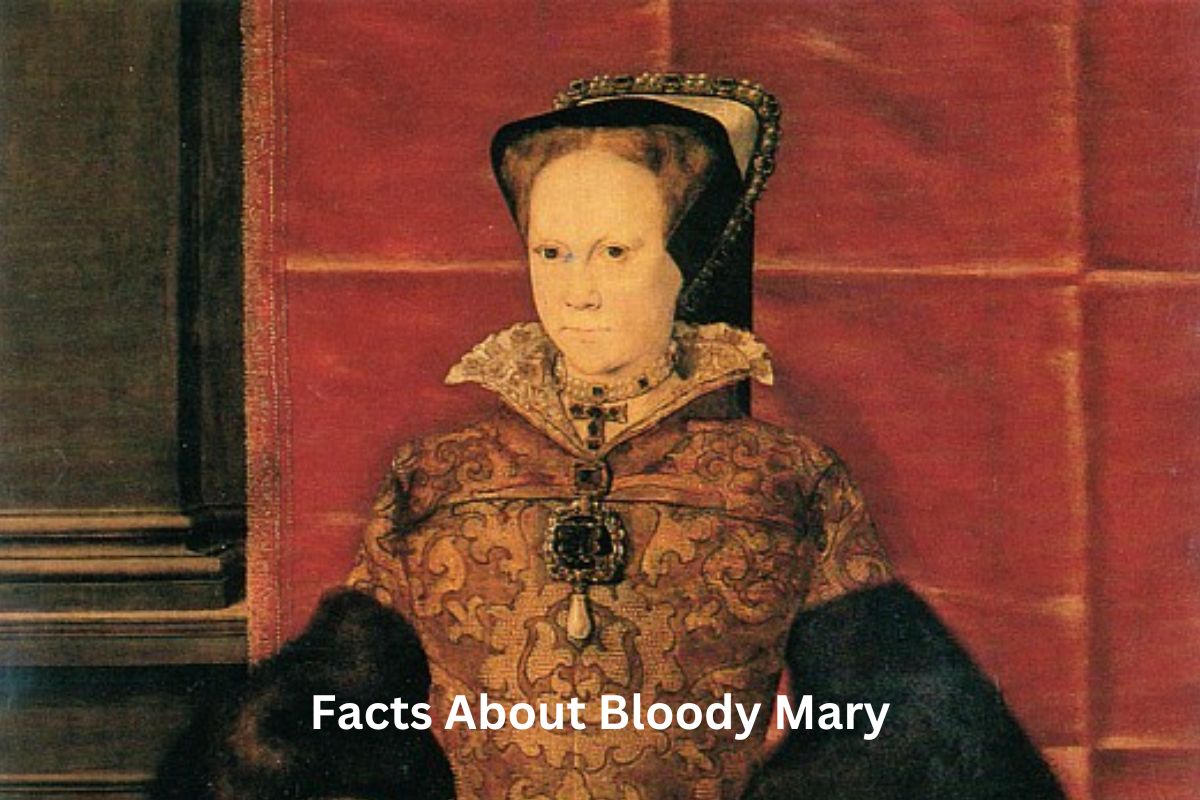Queen Mary I of England, born on February 18, 1516, was the daughter of King Henry VIII and Catherine of Aragon. She became Queen of England in 1553 after the death of her half-brother, King Edward VI.
Mary’s reign is often marked by her fervent efforts to restore Roman Catholicism in England, resulting in the persecution of Protestants and earning her the epithet “Bloody Mary.” She married Philip II of Spain in 1554, a union that was unpopular in England.
Mary’s reign also saw the loss of Calais to France in 1558, marking the end of English territorial holdings on the continent. She experienced false pregnancies and died on November 17, 1558, at the age of 42.
Her death paved the way for her half-sister, Elizabeth I, to become one of England’s greatest monarchs, ushering in the Elizabethan Era. Despite her religious zeal and controversial policies, Queen Mary I’s reign had a significant impact on the course of English history.
Bloody Mary Facts
1. Born on February 18, 1516
Mary I was born on February 18, 1516, at the Palace of Placentia in Greenwich, England. She was the only surviving child of King Henry VIII and his first wife, Catherine of Aragon. Her birth was a significant event in England, as it was hoped that she would secure the Tudor dynasty’s succession.

2. Daughter of King Henry VIII and Catherine of Aragon
Mary was the daughter of King Henry VIII and Catherine of Aragon. Her parents’ marriage was politically significant, as it was intended to strengthen the alliance between England and Spain.
Also Read: Mary Queen of Scots Timeline
However, it became a matter of controversy when Henry sought to annul the marriage to marry Anne Boleyn, leading to England’s break from the Roman Catholic Church and the creation of the Church of England.
3. Became Queen in 1553
Mary I ascended to the throne of England in 1553 following the death of her half-brother, King Edward VI. Edward VI had tried to secure a Protestant succession to the throne, and he excluded Mary from the line of succession in his will.
Also Read: Who was the Real Bloody Mary?
However, many in England still supported Mary’s claim as the legitimate heir, and she gained the support of key nobles and military leaders.
Her accession marked a significant shift in religious policy, as she aimed to restore Roman Catholicism in England after years of Protestant influence under her father and brother.
4. Attempted to restore Roman Catholicism in England
Queen Mary I is primarily remembered for her efforts to restore Roman Catholicism in England after the Protestant reforms implemented by her father, Henry VIII, and her half-brother, Edward VI.
She was a devout Catholic and believed that it was her duty to return England to the authority of the Pope and the Roman Catholic Church. Her religious policies included repealing Protestant laws and reestablishing Catholic practices.

5. Ordered the execution of many Protestants, earning the nickname “Bloody Mary”
Queen Mary I’s religious zeal led to a period of intense persecution of Protestants. She ordered the execution of numerous Protestant leaders, scholars, and commoners who refused to renounce their Protestant beliefs.
The most infamous method of execution was burning at the stake. This brutal repression of religious dissent earned her the nickname “Bloody Mary” and left a lasting stain on her legacy.
6. Married Philip II of Spain in 1554
In 1554, Queen Mary I married Philip II of Spain, who was also the King of Spain. This marriage was largely politically motivated. Mary hoped that the union with the powerful Spanish monarchy would help strengthen Catholicism in England and provide an heir to the throne.
However, the marriage was deeply unpopular among the English population, who feared Spanish influence over their country. It did little to enhance Mary’s popularity or stability as queen.
7. Experienced false pregnancies during her reign
Queen Mary I experienced a series of false pregnancies during her reign. She believed herself to be pregnant on several occasions, which raised hopes of providing an heir to continue the Tudor dynasty.
However, each time, it was discovered that she was not actually pregnant. These false pregnancies added to the political and emotional turmoil of her reign, as the lack of a clear heir created uncertainty about the succession.

8. Lost Calais to France in 1558
One of the significant setbacks of Mary I’s reign was the loss of Calais to France in 1558. Calais had been an English possession for over two centuries, and its loss was a considerable blow to English pride.
The French captured Calais after a protracted siege, and its fall marked the end of England’s territorial holdings on the continent.
9. Died on November 17, 1558
Queen Mary I passed away on November 17, 1558, at the relatively young age of 42. Her health had been declining, and her death marked the end of her tumultuous and controversial reign. Her passing paved the way for her half-sister, Elizabeth I, to ascend to the throne.
10. Succeeded by her half-sister, Elizabeth I
Upon Mary I’s death, her half-sister Elizabeth became the next monarch of England. Elizabeth I’s reign would be one of the most celebrated in English history, often referred to as the Elizabethan Era.
Elizabeth would oversee the establishment of the Church of England as a Protestant institution, bringing relative religious stability to the kingdom and fostering a period of cultural flourishing and exploration.
